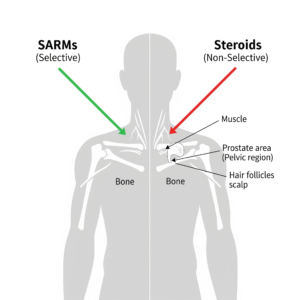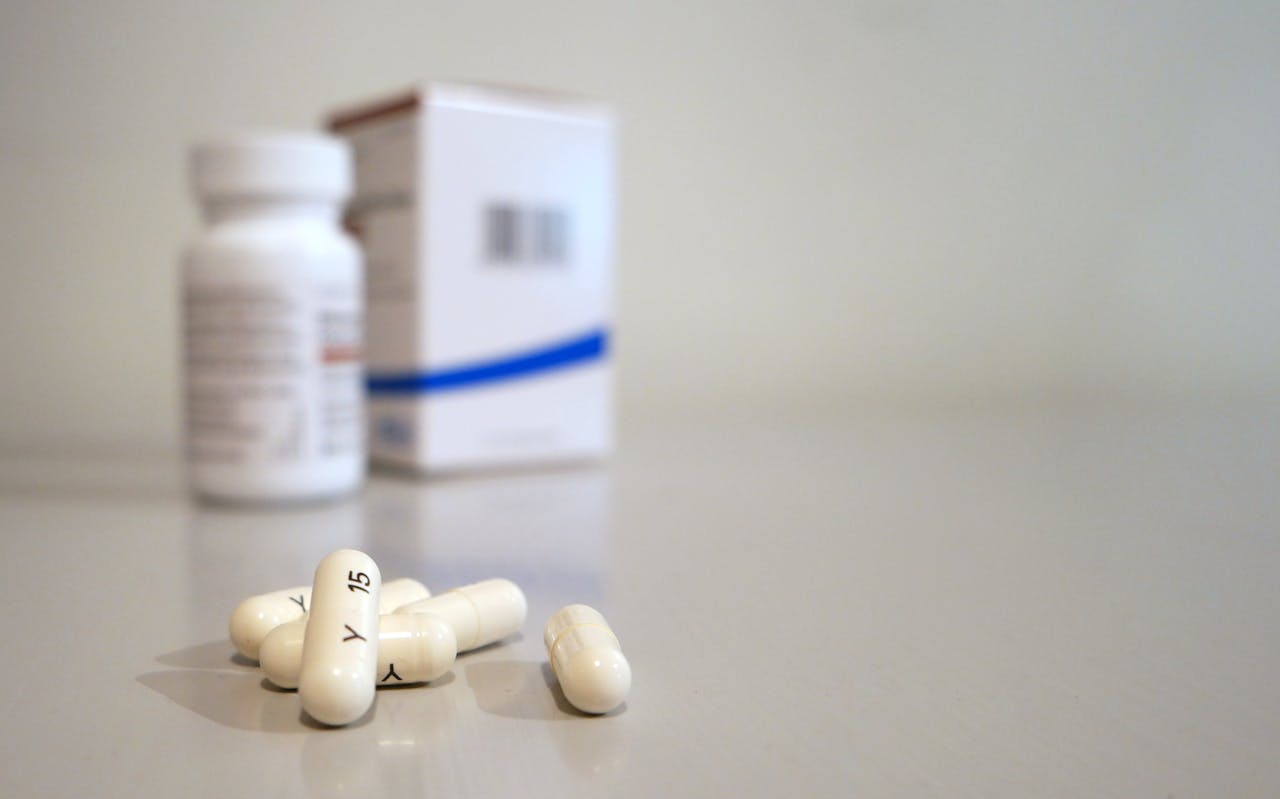Hey there. Let’s talk about a topic that’s buzzing in a lot of online forums and gym locker rooms: combining LGD-4033 with Testosterone Replacement Therapy. If you’ve found yourself searching for answers about this particular combination, you’re not alone. Many people are on a quest to maximize their results, whether it’s for building muscle, increasing strength, or just feeling their best. Navigating the world of performance enhancers can feel like a minefield, especially when you’re already on a medically supervised plan like TRT. So, let’s dive deep into the topic of lgd 4033 while on trt, and get some clarity on what this combination entails, what the potential benefits are, and, most importantly, what you absolutely need to know about the risks.
The Foundation: Understanding TRT
Before we get into the specifics of combining therapies, it’s crucial to have a clear understanding of Testosterone Replacement Therapy itself. TRT is a medical treatment designed for men who have clinically low testosterone levels. This isn’t for someone who just wants to feel a bit more energetic. We’re talking about men with symptoms like chronic fatigue, reduced libido, depression, and loss of muscle mass that are directly linked to hypogonadism.
TRT is a long-term solution, administered under the watchful eye of a doctor, to bring a man’s testosterone levels back into a healthy, physiological range. The goal is to restore normal function and quality of life, not to elevate testosterone to supraphysiological levels for performance. It’s about bringing things into balance.
The New Kid on the Block: What is LGD-4033?

LGD-4033, also known as Ligandrol, is a SARM, or a Selective Androgen Receptor Modulator. The “selective” part is what makes it so interesting to many people. Unlike traditional anabolic steroids, which can affect androgen receptors all over the body—leading to a host of unwanted side effects like hair loss and prostate issues—SARMs are theoretically designed to target specific receptors. In the case of LGD-4033, it’s meant to selectively activate androgen receptors in skeletal muscle and bone tissue.
This is why people are drawn to it: they want the anabolic, muscle-building effects of testosterone without the negative androgenic side effects. LGD-4033 has been studied for its potential to combat muscle wasting in patients with various medical conditions, but it’s not approved for clinical use in this context. It’s often sold as a “research chemical,” which is a legal loophole that doesn’t mean it’s safe for human consumption.
The Big Question: Why People Consider Stacking LGD-4033 with TRT
You might be asking yourself, “If I’m already on TRT, why would I need to add something like LGD-4033?” It’s a fair question, and the reasoning often comes from a place of seeking “more.” People who are already feeling the benefits of their TRT—improved mood, energy, and muscle retention—may start to wonder if they can push their results even further. They see anecdotal reports online of LGD-4033 providing significant, rapid gains in muscle and strength that they believe go beyond what their TRT can provide alone.
The logic is that since their testosterone levels are already “taken care of” by TRT, they can add a SARM to get an extra boost without some of the usual side effects of using SARMs alone. This is the central idea behind using lgd 4033 while on trt, and it’s a decision that, while intriguing, comes with a host of complexities and risks we need to address head-on.
The LGD 4033 TRT Cycle: A Look at the Logic
Let’s discuss the common approach people take to combining these compounds. The idea of an LGD 4033 TRT cycle is based on the premise that the TRT provides a stable, healthy base level of testosterone. With your testosterone levels already stable, the thought is that adding LGD-4033 can then provide an additional, anabolic stimulus. People often use a cycle for a period of 8-12 weeks.
The dosing of LGD-4033 typically starts low and might be slowly increased over the cycle. The idea is that the TRT acts as a protective buffer, preventing the testosterone suppression that LGD-4033 would cause on its own. This is a common misconception, and we’ll talk more about the reality of that in a moment.
Exploring the Potential Benefits
Let’s be honest, people don’t do this for no reason. The supposed LGD 4033 benefits are why people are willing to take the risk. The most often cited benefits include:
- Rapid Muscle Growth: Users report significant gains in muscle mass, often more quickly than with TRT alone.
- Increased Strength: Many people claim a noticeable boost in strength, allowing them to lift heavier weights and push past plateaus.
- Improved Body Composition: A lot of anecdotal reports suggest a leaner, more “cut” physique due to fat loss and muscle gain.
- Enhanced Recovery: Users feel they can recover from intense workouts faster, leading to more frequent and productive training sessions.
These benefits are compelling, especially for someone who feels they have hit a plateau. However, it’s essential to remember that these are primarily based on anecdotal evidence, not clinical research on a large scale.
The Serious Risks and Side Effects You Can’t Ignore

Now, let’s talk about the downside. No matter what you read online, there is no such thing as a “safe” performance enhancer. The LGD 4033 side effects can be very real and very serious.
- Hormonal Disruption: We’ll touch on this more in a minute, but LGD-4033 absolutely impacts your body’s natural hormone production, even when on TRT.
- Cardiovascular Strain: There are concerns that SARMs can negatively impact cholesterol levels, potentially raising bad cholesterol (LDL) and lowering good cholesterol (HDL). This is a serious risk for heart health.
- Liver Toxicity: LGD-4033 is processed by the liver, and there is a risk of liver strain or damage, especially with prolonged use or high doses.
- Suppression of Natural Testosterone: While you’re on TRT, your natural testosterone production is already suppressed. However, LGD-4033 can have an even further suppressive effect on other hormones like LH and FSH, which are vital for testicular health.
- Unknown Long-Term Effects: This is the most significant risk. Because SARMs are still relatively new and largely unstudied in humans for long-term use, we simply don’t know the full extent of their potential long-term side effects.
This is a list that should make anyone pause. Your health is not something to gamble with for the sake of a few extra pounds of muscle.
A Common Misconception: LGD 4033 and Testosterone Suppression
There’s a popular belief in some circles that because you’re already on TRT, you don’t have to worry about testosterone suppression from LGD-4033. This is a dangerous oversimplification. While your exogenous testosterone is being administered, SARMs like LGD-4033 still act on the body’s feedback loop. They can suppress your body’s natural production of luteinizing hormone (LH) and follicle-stimulating hormone (FSH), which are crucial for testicular size and function. Therefore, the notion of LGD 4033 and testosterone suppression is not just a concern for those not on TRT; it’s a very real factor that can lead to testicular atrophy and other hormonal imbalances that can be difficult to reverse.
The Reality of Stacking LGD-4033 with TRT
In the end, what it comes down to is this: you’re trying to build a better version of yourself, but what is the cost? The real-world experience of using lgd 4033 while on trt is a mixed bag of potential benefits and very real, documented risks. People report great gains, yes, but they also often report dealing with lethargy, mood swings, and a feeling of being “off.” The combination is a powerful one, and it’s not to be taken lightly. It’s a choice to venture into a largely unregulated and under-researched area of pharmacology. The allure of bigger muscles and a leaner physique is strong, but the health implications are a very real, and often permanent, consequence.
Final Thoughts: The Importance of Professional Guidance
Let’s be real for a moment. Whether you’re on TRT or just starting to consider your options, the smartest move you can make is to talk to a professional. The decision to pursue an lgd 4033 while on trt protocol, or any other performance-enhancing drug regimen, should never be based on a blog post or a gym buddy’s advice. These are complex medical decisions that require the expertise of a qualified professional who can monitor your blood work, assess your risks, and guide you safely. We, at PuurHW are committed to helping our Houston-based clients achieve their wellness goals in a safe, medically supervised environment. We don’t just treat symptoms; we work to understand the root cause of your health concerns to build a sustainable, long-term plan.
Conclusion
The appeal of stacking LGD 4033 with TRT is understandable. The desire to optimize results and feel your best is a powerful motivator. However, the risks involved are significant and should not be dismissed. Before you ever consider this or any other similar regimen, please seek out the advice of a healthcare professional who can give you a safe, evidence-based plan that will truly help you achieve your goals without jeopardizing your long-term health. Your body is a finely-tuned machine, and it deserves nothing less than the utmost care and respect.


